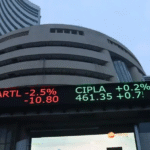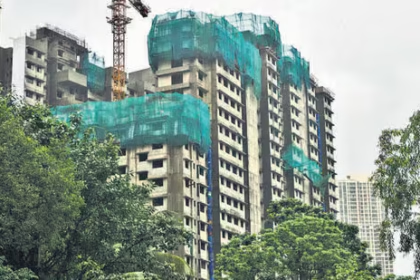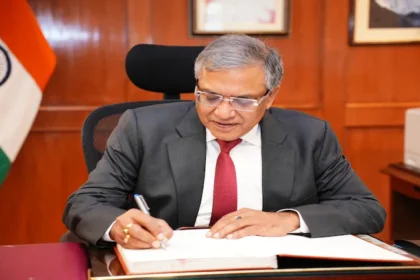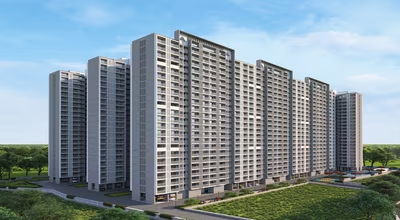Dongri Forest Under Siege: Bhayander Community Rallies to Protect 12,000+ Trees From Metro Shed Project
Bhayandar (Mira–Bhayandar) – In an extraordinary show of community solidarity, thousands of Bhayander residents have come together to defend the Dongri Forest from the proposed Metro Line 9 car shed project, which threatens to clear over 12,400 mature trees. The movement, which spans multiple villages—including Dongri, Uttan, Tarodi, and Morva—is rapidly shaping into a defining environmental struggle for the region.
Roots of the Conflict
The Mumbai Metropolitan Region Development Authority (MMRDA) plans to develop a car shed as part of the ongoing Metro 9 extension, connecting Dahisar East to Bhayandar —‑ a corridor intended to ease traffic congestion and boost connectivity. To accommodate this facility, dense woodland spread across 12 hectares of government land at Dongri must be leveled. Estimates suggest over 12,000 trees would need to be cut down, devastating the area’s fragile ecosystem.
Residents argue this green belt is not merely a patch of trees, but a crucial ecological buffer—home to diverse wildlife, preventing soil erosion, and mitigating urban heat—vital for both people and nature.
Surge of Green Resistance
Local communities across ten villages have mobilised, forming a strong coalition of citizens, religious groups, environmentalists, and political actors from the Congress-led “Chipko movement.” Over 15,000 signatures have been collected in a petition demanding the relocation of the car shed to a less ecologically sensitive area.
The Catholic Church, under Bishop Allwyn D’Silva, urged its followers to join a silent rally in front of Dongri Church, waving black flags in symbolic protest. In response, local police imposed prohibitory orders (Section 37 of the Maharashtra Police Act) aimed at restricting large public gatherings through July 7.
Voices from the Frontline
Healthcare worker Lourdes D’Souza, a prominent activist, described the forest as “the last lung of Mira–Bhayandar,” criticizing municipal apathy and accusing authorities of turning once-forested hills into dumping grounds.
From the Congress, District President Pramod Samant argued that destroying 165 acres of green cover was not only unnecessary, but a breach of the Maharashtra Tree Conservation Act, noting viable alternative sites are readily available.
Environmentalists warn similar battles over green space—like Mumbai’s Aarey fight—only make the stakes higher. “Mumbai’s climate resilience depends on these spaces,” one activist said. They emphasize that trees offer not just biodiversity, but breathable air and climate control within urban settings.
Pressing Authorities for Accountability
Locals are pushing for a fair environmental review, with demands that include:
- An immediate halt to tree cutting.
- A feasibility study to locate an alternate depot site.
- Formation of an independent ecological panel involving community members.
The Mira-Bhayandar Municipal Corporation had previously listed only 68 objections during the public notice period—alarming activists who fear inadequate transparency in decision-making
Temporary Respite, Ongoing Tensions
City authorities recently paused the tree-felling operations—not due to policy change but because of mounting protests where over 500 local residents pledged further resistance at a Sunday’s public meeting.
But activists warn this is only a pause. They promise to intensify their response unless the car shed plan is either scrapped or relocated to degraded land far from vital forests.
A Wider Battle for Mumbai’s Green Future
This grassroots movement is symptomatic of broader urban planning tensions in Mumbai’s growth corridors—where infrastructure projects like Metro Lines 3 and 7 clashed with forest ecosystems in Aarey and beyond. As activists note, these green enclaves are not ornamental; they are critical for cooling, flood control, and preserving biodiversity.
In the face of climate change, each such forest is a frontline; each tree felled diminishes the city’s collective resilience.
What’s Next?
The community has demanded:
- Withdrawal of approval for the Dongri site.
- Scientific exploration of alternatives with local stakeholder involvement.
- Strict adherence to environmental regulations, including tree conservation and compensatory afforestation.
While MMRDA maintains that environmental clearances will be secured before any construction begins, activists stress that permission should only be considered after transparent, scientifically grounded, and participatory planning.
The Dongri campaign represents more than one dispute—it marks a turning point in how Mumbai understands green spaces and civic participation. The rallying cry of Bhayander’s citizens, from church leaders to tribal activists, signals a growing demand: progress should never come at the cost of ecological extinction.
If this movement succeeds, it could set a new precedent—where trees are weighed equally with transit lines, and communities lead the shaping of Mumbai’s urban future.
Also Read: India’s 2025 Digital Census: 140 Crore Citizens Can Now Self-Ennumerate Online for the First Time







